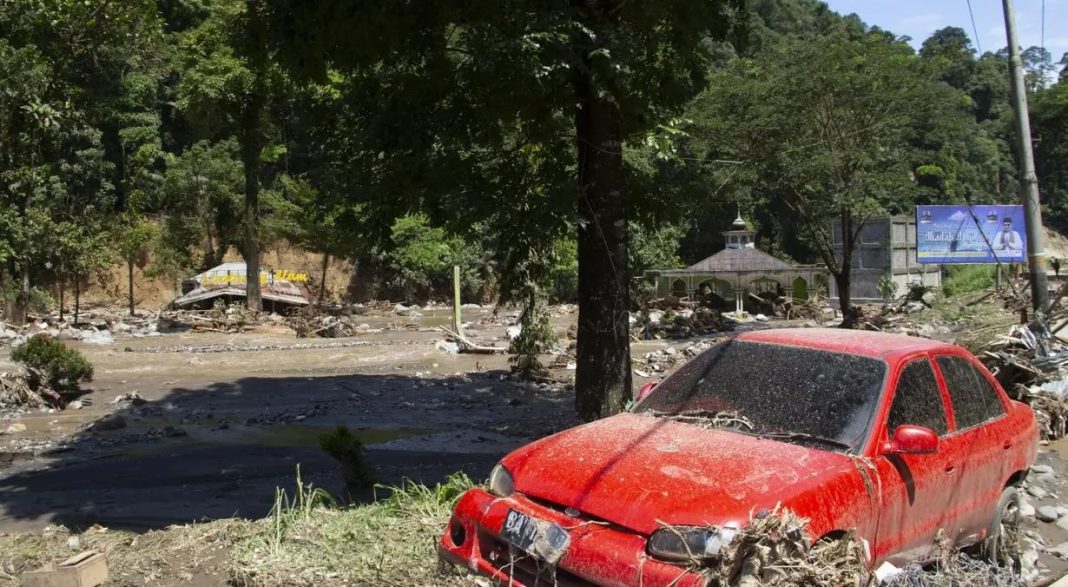Heavy rainfall in Indonesia over the weekend led to flash flooding and the descent of cold lava from Mount Marapi, an active volcano on Sumatra island, claiming at least 37 lives, officials reported.
The prolonged rain on Saturday night triggered lahars, a mixture of volcanic rock and ash, which surged down the slopes of Mount Marapi and into nearby towns. These lahars, resembling a turbulent slurry of wet concrete, swept through homes, while the overflowing of a nearby river exacerbated the situation.
Lahars, often initiated by volcanic eruptions or landslides, can rapidly increase in size and velocity, posing significant dangers to structures and communities in their path. They have been known to grow exponentially as they descend, incorporating more debris and water, reaching speeds exceeding 120 miles per hour.
The disaster affected four areas in western Sumatra, causing extensive damage to nearly 200 houses and prompting the evacuation of 159 individuals in Agam. Mud deposits from the flooding were reported to have risen as high as an adult’s calves in some areas.
As of Sunday night, the death toll stood at 37, with 17 individuals still missing, according to Indonesia’s disaster management agency.

